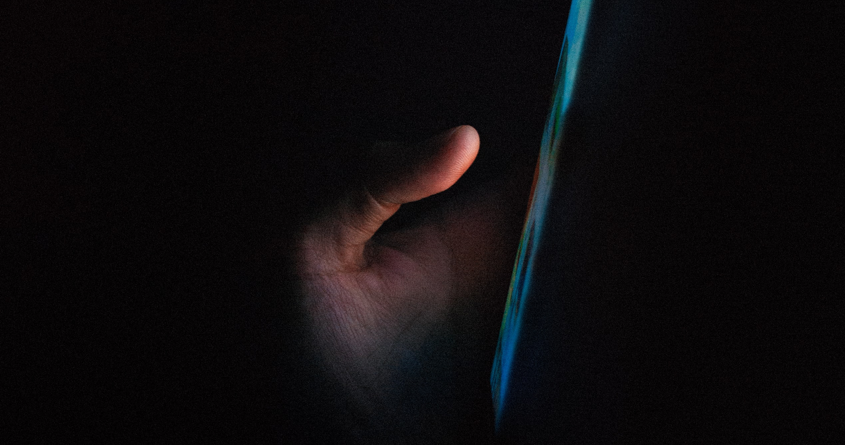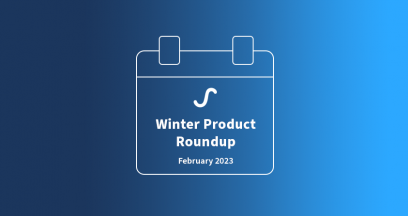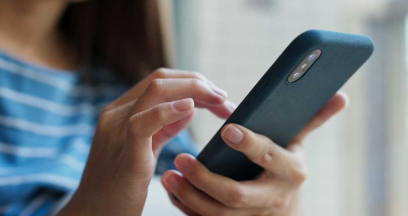In 2021, the world adapted to an ongoing pandemic. Working styles adapted, industries shifted, and consumers doubled down on their mobile-first habits. In this new normal, mobile apps helped deliver powerful content and transformative experiences to enrich users’ lives worldwide in more ways than ever before.
Overall, across 2021, app store revenue, downloads and time spent in apps all soared to new levels. Let's discuss some of this data in more detail.
Time Spent on Mobile Increases
The top 12 mobile-first countries—including Brazil, the United States, and India—spent, on average, more than four hours a day in apps. That’s an additional seven countries spending more than four hours on mobile compared to 2020.
The average American spent an hour less (3.1 hours) watching TV than they did staring at their mobile screens. This is an increase of 30% from 2019 and equates to a third of waking hours consuming mobile content.
Certain app categories have seen an increase in market share of time spent. Consumers are engaging more in early-mover categories with seven out of every ten mobile minutes spent in social, communication, photo and video apps—particularly Gen Z.
In saying that, this domination has not been at the expense of other categories. Rather, users are turning their previous ‘non-mobile’ minutes into time spent in apps.
App Download and Revenue Growth
The mobile ecosystem boomed in 2021, with phenomenal growth across app downloads, releases, usage and consumer spend. Globally, there were 230 billion app downloads, two million new releases, and a new high of $170 billion in consumer spend as mobile gaming, and in-app subscriptions went mainstream.
Over 230 apps and games surpassed $100 million in annual consumer spend, and 13 exceeded $1 billion—an increase of 20% from 2020. In contrast, only 38 movies achieved this milestone in global box office takings during the same period.
This dramatic shift reflects the long-term change in consumer habits as they migrate to mobile as their de facto gaming console, entertainment hub, and universal tool for managing their lives. Moreover, consumers are willing to pay for premium experiences and services inside their favorite apps.
What Does This Growth Mean for App Marketers?
The mobile data and reports from 2021 can help unearth opportunities for reaching audiences where they are—and we know that place is on mobile. The surge in app releases, downloads, usage, and spend clearly illustrates the demand for engaging customers on mobile.
The data suggests an entirely promising landscape for app developers and marketers, right? How could it be interpreted as anything but optimistic? However, we should air on the side of caution and analyze the data a little closer before coming to any conclusions.
The data reveals that users are spending more of their previous non-mobile time in apps. But not just any apps. They spend 70% of their time in social, communications, photo, and video apps—namely TikTok, Instagram, and Facebook.
TikTok remained the most popular app globally for the second year in a row, with 656 million downloads. It has become one of the most popular social media applications of all time. But why is it so popular, and what can we learn from its explosive growth?
TikTok’s unique algorithm learns what content users want faster than any other apps of its variety, resulting in hyper-relevant user experiences. According to a Neilsen study, most users are looking for micro-entertainment and short distractions during the day and are delighted by the unique content they find on TikTok—or rather, the content presented to them by the sophisticated algorithms.
What Can Non-Social Apps Learn From TikTok?
The popularity of TikTok gives us a glimpse into what it means to be living in today’s hyper-connected world.
Users spend so much of their waking hours in these social apps because they want to feel connected, and they know the content they encounter will be vibrant, interactive, engaging, and relatable. Over time, they have come to expect the same stimulation from all of their mobile experiences.
Moreover, users’ attention spans are shrinking. This is evident from the short-form video content (the majority of TikTok clips are 15 seconds in length) that they find so captivating.
Breaking Through The Noise
These findings present new challenges for mobile apps: breaking through the noise of a crowded mobile landscape. How do you translate the connectedness and engagement users experience in social apps across other categories?
Finding new and creative ways to relate and engage with customers has never been more critical. When users leave social apps and enter other app categories for the remaining 30% of their in-app time, as a brand, you need to make that time count.
Educate Users on the Value of Your App
If your marketing efforts thus far have convinced your users to download and open your app, you should be doing everything in your power to engage and provide value, particularly when you can decide what your users experience and when.
For those who have never worked with in-app messaging before, an in-app is a mobile communication that presents on a user’s screen while interacting inside the app. The message appears in response to a user’s past or real-time behavior and is triggered by a particular event in the app. Because of this, in-apps offer unparalleled engagement and relevancy.
Let’s look at some examples of how brands can use in-app to inform users of the value of their app.
If an important feature has yet to be discovered by a user, an in-app message can call attention and deep link to where the feature is located, or educate users on what makes the feature worth using. Yelp does a good job of this with their “Yelp Collections” feature.
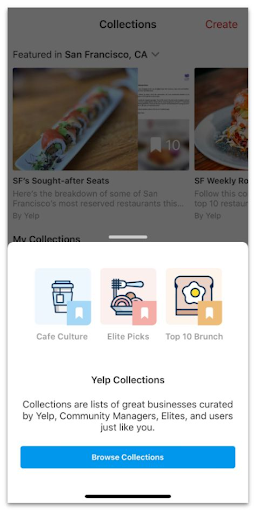
Help users to get the most out of your app by providing bite-size tips throughout the app. If key features are being underused or undiscovered, tailor your messaging to highlight feature benefits and trigger these messages when certain features would be most helpful to users in that moment. This way, users can see the potential value of your app.
Travel booking platform Hopper uses in-app messaging to turn simple actions into pivotal aha moments. In this example, they are highlighting the advantage of the feature by helping users visualize the maximum savings they can make by using their platform.
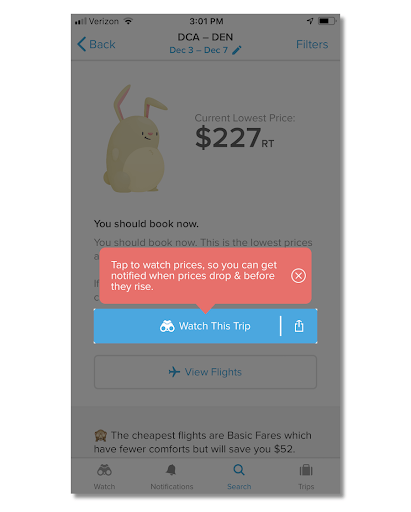
If you have released a new feature, you can let your audience know about it as soon as they fire the app, as Amazon has done here. This subtly lets users know that you’re actively adding new features and improvements to your app.
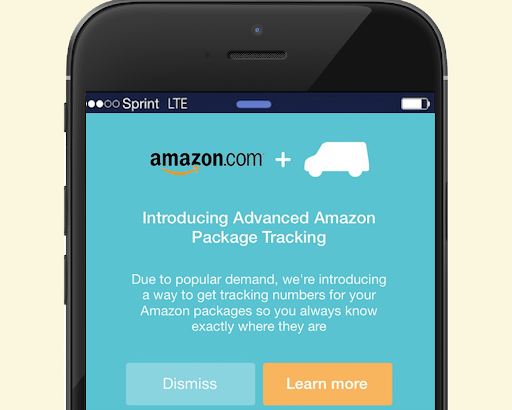
Banking app Revolut offers a wide range of features, meaning some functionalities could go unnoticed if they are not visible in the main dashboard; especially for users who have built habits around banking or when some features wouldn’t be typical of a traditional banking scenario.
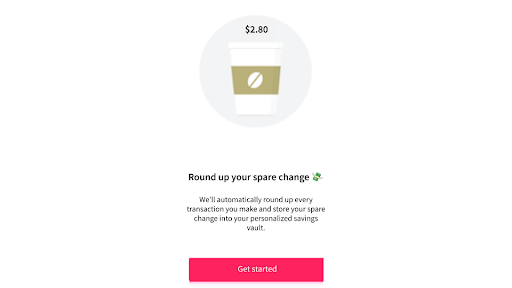
To build deep, lasting app engagement throughout the user journey, you need to guide users so they can discover the ongoing value of your app.
Motivate users to take meaningful actions with in-app messages that are designed and positioned to inform and delight users every time they enter your app.
Provide Helpful Progress Updates
The ultimate challenge for making an app engaging? Bookkeeping software. If an app can make you feel good about doing your taxes, it must be doing something right.
Quickbooks makes payments more interesting by communicating milestones with friendly in-app messages. Regardless of the mundanity of the task, celebratory messages serve as mile markers and give users a sense of progress and satisfaction. Identify any tedious tasks associated with your app and break them up into more manageable chunks, celebrate progress and give users a clear indication of where they are in a lengthy process. If users associate your product with making life easier and an enjoyable experience, they are more likely to stick around.
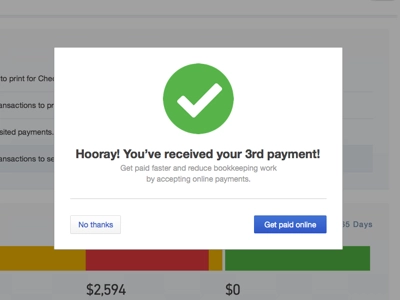
Learning a new language can also seem like a daunting task with no end in sight. Duolingo encourages users with milestone achievements and uplifting copy that encourages regular learning and repeat usage of their app.

What behaviors do you want your users to repeat? Use in-app notifications to highlight milestones and encourage habit formation.
Showcase Content, Products, and Offers
Every time someone opens your app, they are carrying out a number of potential actions—browsing content, clicking a link, making a purchase, etc. This information helps you understand how each user is interacting with your brand and creates opportunities for trigger campaigns.
Sending a logical and valuable message to a user based on a specific action they have carried out can deepen customer engagement and lengthen the time they spend in your app. When your messages are customized based on in-app behavior, they resonate and keep users coming back.
A media app for example may know that a particular user always clicks through to read articles related to Formula 1 racing. When they open the app, you can send an in-app message directing the user to a breaking news story about Lewis Hamilton.
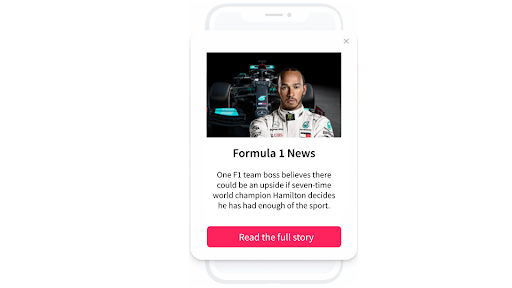
A media streaming app can notify users of the latest episodes, seasons, or movies in a series they’ve watched and help users discover new favorites based on previously watched content.
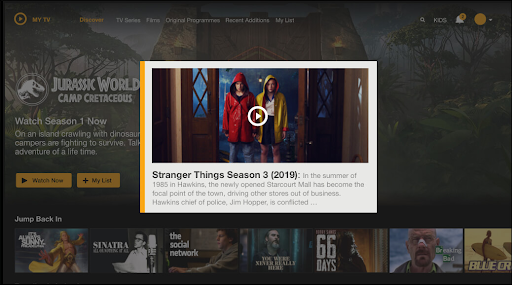
An eCommerce store can leverage app data by offering a discount on a wishlist item, sharing offers on previously viewed products, or recommending a complimentary item against the knowledge of a recent purchase.
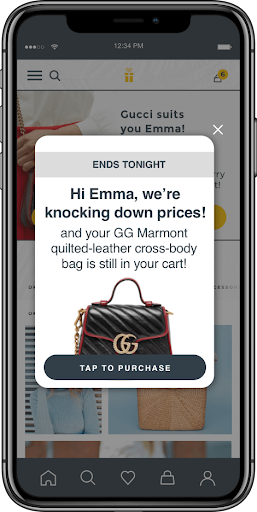
Final Thoughts
If you haven't got anything engaging to say, don't say anything at all.
Targeted, thoughtful in-app messaging can deepen engagement and drive product adoption. A clumsy barrage of popups, on the other hand, only drives people away.
Make sure to step back from your product and take the time to understand your users (who needs what and when), and target your messaging to the people who will find it useful in that moment.
As consumers face more distractions on their mobile devices than ever, brands cannot afford to ignore the demand for personalized messaging. Instead, they should take advantage of the technologies leading the next generation of mobile marketing.



